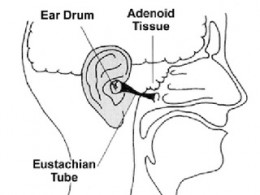


Due to the severity of the middle ear abnormalities and the risk for facial nerve damage, the patient was not offered an ossicular chain reconstruction but a bone conduction device after this exploratory tympanotomy. These malformations were seen on high resolution Computed Tomography scanning and during an exploratory tympanotomy. To our knowledge, this is the first report to describe middle ear abnormalities in VMS. Here, we present a VMS patient with congenital malformations of the middle ear as the main reason for severe conductive bilateral hearing impairment. Almost all nine described patients have been shown to be affected by conductive hearing impairment attributed to microtia, and atresia of the outer ear canal. The main features of this syndrome comprise intellectual disability, blepharo-naso-facial malformation, and hand anomalies. Van Maldergem syndrome (VMS) is a very rare syndrome that was first described in 1992. Verheij, Emmy Thomeer, Henricus G X M Pameijer, Frank A Topsakal, Vedat Middle ear abnormalities in Van Maldergem syndrome. A simple, nonsurgical treatment in a Caucasian population appeared to be very effective in correcting congenital ear abnormalities with no complications and high patient/parent satisfaction. The percentage of newborns in one year in the perinatal centre with recognized ear abnormalities was 6% (90 of 1600). No complications were recognized by the authors or parents by six weeks. In the nontreatment (refusal) group, 67% of the ears failed to correct spontaneously. Overall correction (excellent/improved) for the treatment group was 90% (100% for lop- ear, 100% for Stahl's ear, 67% for protruding ear and 0% for cryptotia). In the treatment group, 59% had lop- ear, 19% had Stahl's ear, 17% had protruding ear and 3% had cryptotia. Of this total, 69 ears were taped and fully evaluated in the study (77%). The total number of ears assessed was 90. A telephone survey of the nontreatment group was conducted. All patients and pictures were assessed by one plastic surgeon (JWT) at six weeks of age and scored using a standard scoring system. Pictures were taken before taping and at the end of taping (one month). The ears were waxed and taped in a standard manner within 10 days of birth. All newborns with identified abnormalities were referred by their family physician to one paediatrician (WGS) in a small level 2 perinatal centre. To determine whether a simple, nonsurgical treatment for congenital ear abnormalities (lop- ear, Stahl's ear, protruding ear, cryptotia) improved the appearance of ear abnormalities in newborns at six weeks of age. Nonsurgical correction of congenital ear abnormalities in the newborn: Case series. Pinna abnormalities Genetic defect - pinna Congenital defect - pinna Images Ear abnormalities Pinna of the newborn ear References Haddad J, Keesecker S.


 0 kommentar(er)
0 kommentar(er)
